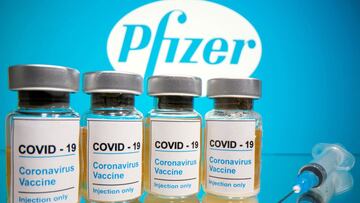How will the covid-19 task force distribute the vaccine to Americans in US?
Pfizer's successful coronavirus vaccine trial was a big step towards overcoming the pandemic but there is still much work to be done to ensure it gets to the most vulnerable and isolated Americans.

News broke on Monday that drug manufacturers Pfizer had recorded a 90% success rate in trials for their covid-19 vaccine. The news brought a new-found optimism as the first real step in finding a pharmaceutical solution to the pandemic, but many health experts were quick to point out that the battle is far from over.
Dr. Ezekiel Emanuel of Joe Biden's coronavirus task force has emphasised the need to win back public trust in healthcare and medical advice before the vaccine can be a success. A CNN survey conducted in October found that only 51% of Americans would get vaccinated against covid-19, even if it was fully certified and affordable.
The Center for Disease Control and Prevented (CDC) are leading the federal government’s attempt to manufacture and distribute a coronavirus vaccine, as part of President Trump’s Operation Warp Speed. On 26 October the CDC told states to be ready to receive the new vaccine from as early as 15 November. They will not quite hit that deadline but states are now facing a race against time to get that vital distribution network set up.
What issues need to be overcome to distribute the vaccine?
The most critical, and most difficult, part of the distribution process of Pfizer’s vaccine is the incredibly low temperatures that it needs to be stored at. The vaccine must be kept at minus 103 degrees Fahrenheit; far lower than state health authorities will have freezers capable of maintaining and around 50 degrees colder than the storage temperature of the next coldest US vaccine.
It is so cold that the temperatures will need to be maintained using dry ice, something never before attempted in American healthcare. Pfizer has designed a ‘thermal shipper’ box to maintain the temperature in transit but then it’s in the hands of local authorities.
As this is a nation-wide effort Biden’s covid-19 task force need to consider how to get it to the more remote territories too. Marion Whicker, part of the Warp Speed operational centre, told CBS News that regional variations in the distribution are being considered in the plans.
“[The Virgin Islands] don't have an ability to dry ice. But what we do know is that we can very quickly move dry ice from Puerto Rico,” he said, giving an example of the challenges they need to overcome.
How quickly can the vaccine be distributed once approved?
Donald Trump’s Warp Speed team is led by former Army supply officer General Gus Perna, who was tasked with building this vital unit from scratch. When asked, Perna admitted that it had been a necessarily rushed process:
“We literally built the team, this collaboration, as we were going. There was no doctrine, there was no strategy, there was no structure of people to this end.”
Despite the lack of preparation, the team have managed to stockpile enough needles, syringes and alcohol swabs to administer 88 million vaccine shots. That part of the process have been provided for by medical distribution company, McKesson.
Perna also confirmed that the Warp Speed team are in possession of an unspecified quantity of the vaccine which would be ready to go ‘if a vaccine is approved tomorrow’. Once the FDA has approved Pfizer’s (or any other manufacturers’) vaccine he anticipates that it could be delivered within 24 hours. The bigger issue may prove to be in producing subsequent batches of the vaccine, with the production time for Pfizer’s product currently around six weeks.
How will the vaccine reach more remote and rural areas?
All that work done by Operation Warp Speed only gets the vaccines out to the states, at which point local authorities will have to take over to ensure that the vaccine is administered to the people who need it. The biggest issues are likely to be in rural areas, which have seen the most dramatic spikes in case numbers in recent weeks.
Preliminary plans obtained by ProRepublica found that many states were not prepared to handle the unique demands of this vaccine. They found that Washington state’s Health Department does not have facilities to store the vaccine; Arizona are not sure how to distribute in rural areas and tribal lands; Kansas are relying on receiving shipments far smaller than the 1,000-dose packages currently produced and Georgia is simply leaving local authorities to work out the details.
Dr. Amanda Cohn, chief medical officer on the CDC’s Vaccine Task Force, said: “Early, when we don’t have lots of doses, I frankly do not anticipate that vaccine will be widely available in every rural community… The first couple months will be not ideal.”
The ease of which you can get your covid-19 vaccine, once it has been approved by the FDA, will really depend on your state and how close to a major distribution centre you live. It will not be an easy task but take comfort from the fact that the biggest uncertainties of the covid-19 vaccine are now centred on the logistical, rather than the pharmaceutical. And that at least, is progress.






